Description
The instruction for medical use of Telmista®n medicine the Trade name of Telmista®N the International unlicensed name Is not present the Dosage form of the Tablet Structure One Tablet contains for a dosage 40 mg / 12.5 mg active agents: telmisartan 40 mg hydrochlorothiazide of 12.5 mg excipients: meglumin, sodium hydroxide, K30 povidone, lactoses monohydrate, sorbitol, magnesium stearate, Mannitolum, ferrous oxide red (E172), hydroxypropyl cellulose, silicon dioxide colloidal anhydrous, sodium of 80 mg stearylfumarating for a dosage / 12.5 mg active agents: telmisartan 80 mg hydrochlorothiazide of 12.5 mg excipients: meglumin, sodium hydroxide, K30 povidone, lactoses monohydrate, sorbitol, magnesium stearate, Mannitolum, ferrous oxide red (E172), hydroxypropyl cellulose, silicon dioxide colloidal anhydrous, sodium of 80 mg stearylfumarating for a dosage / 25 mg active agents: telmisartan 80 mg hydrochlorothiazide of 25 mg excipients: meglumin, sodium hydroxide, K30 povidone, lactoses monohydrate, sorbitol, magnesium stearate, Mannitolum, ferrous oxide yellow (E172), hydroxypropyl cellulose, silicon dioxide colloidal anhydrous, the sodium stearylfumarating. The description of the Tablet of an oval form, biconvex, two-layer, from white till almost white or pinkish-white color on one party and pink and marble on the opposite side (for dosages of 40 mg / 12.5 mg and 80 mg / 12.5 mg). Tablets of an oval form, biconvex, two-layer, from white till yellow-white color on one party and yellow and marble on the opposite side (for a dosage of 80 mg / 25 mg). Pharmacotherapeutic group Cardiovascular system. The drugs influencing renin-angiotenzinovuyu a system. Angiotensin II antagonists, combinations. Angiotensin II antagonists in a combination with diuretics. Telmisartan and diuretics. The ATX C09DA07 code the Pharmacological Pharmacokinetics Telmisartan properties Peak concentration of a telmisartan at oral administration is reached in 0.5-1.5 h after reception. The absolute bioavailability of a telmisartan in doses of 40 mg and 160 mg was 42% and 58% respectively. The concomitant use of food insignificantly reduces bioavailability of a telmisartan, reducing the area under the peak of concentration of drug in blood plasma (AUC) approximately by 6% at reception of 40 mg and approximately for 19% after reception of 160 mg. Small decrease in peak of concentration does not affect therapeutic effectiveness of drug. Pharmacokinetics of a telmisartan at oral administration within doses of 20-160 mg nonlinear, Cmax and AUC in proportion increase with increase in a dose. At repeated use telmisartan slightly kumulirut in blood plasma. Telmisartan well contacts proteins of blood plasma (& gt, 99.5%), generally albumine and an alpha L-acid glycoproteins. The visible volume of distribution of a telmisartan about 500 l that shows additional linking with fabrics. More than 97% of drug at oral administration are removed with a stake by biliary excretion. In urine trace quantities are found. Telmisartan is metabolized by conjugation in pharmacological inactive metabolites – atsetilglyukuronida. Glucuronides are the only metabolites of initial substance which were found in the person. After a single dose of a telmisartan the maintenance of glucuronides in blood plasma made about 11%. Telmisartan is not metabolized by isoenzymes of a system of P450 cytochrome. Clearance speed is more than 1500 ml/min. of blood plasma. Terminal elimination half-life more than 20 h. The hydrochlorothiazide At oral administration of the fixed combination telmisartan / a hydrochlorothiazide peak concentration of a hydrochlorothiazide is reached in 1.0-3.0 h after reception. In view of that the hydrochlorothiazide can kumulirovatsya at renal excretion absolute bioavailability makes 60%. The hydrochlorothiazide for 68% contacts proteins of blood plasma and its visible volume of distribution is 0.83-1.14 l/kg. The hydrochlorothiazide is not metabolized and is almost completely removed in an invariable view through kidneys with urine. About 60% of an oral dose are allocated in not changed look during 8 h. Renal clearance of 250-300 ml/min. Terminal elimination half-life of a hydrochlorothiazide of 10-15 h. The pharmacodynamics the Fixed combination telmisartan / a hydrochlorothiazide – represents a combination of the antagonist of receptors of angiotensin II – a telmisartan and thiazide diuretic – a hydrochlorothiazide that provides higher level of antihypertensive effect, than reception of each of components separately. At reception of the fixed combination telmisartan / the hydrochlorothiazide is provided an effective and smooth lowering of arterial pressure within a therapeutic dose once a day. Telmisartan is effective at oral administration and is a specific (selection) antagonist of receptors of angiotensin II of subtype 1 (AT1). Telmisartan substitutes angiotensin II as has high affinity to AT1 receptors in the place of binding which are responsible for the established effects of angiotensin II. Telmisartan it is selective and long contacts receptors of AT1 and has no affinity to other receptors, including AT2 and other AT receptors. The functional role of the specified receptors is not established yet, as well as their effects at possible hyper stimulation of angiotensin II which level increases under the influence of a telmisartan. Telmisartan reduces Aldosteronum level in blood plasma and angiotensin of the turning enzyme (kininaza of II) to which participation there is a decrease in synthesis of bradykinin does not suppress activity therefore potentiation of negative effects of bradykinin does not happen. Angiotensin II inhibition against the background of a telmisartan keeps more than 24 hours and remains up to 48 h. After reception of a telmisartan, the antihypertensive activity is reached within 3 hours. The maximum lowering of arterial pressure was generally reached in 4-8 weeks after an initiation of treatment and proceeded during long therapy. The antihypertensive effect kept at the constant level during 24 h. At patients with hypertensia telmisartan reduces both systolic, and diastolic pressure, without affecting pulse rate. At the sharp termination of treatment telmisartany arterial blood pressure gradually is restored to the previous level within several days without development of rebaund-syndrome (sharp increase in arterial blood pressure). Tiazida influence a reabsorption of electrolytes in tubules of kidneys, directly increasing excretion of sodium and chlorides in approximately identical quantities. The diuretic effect of a hydrochlorothiazide leads to decrease in volume of blood plasma, increase in level of renin in blood plasma, to increase in secretion of Aldosteronum that promotes increase in removal of potassium and bicarbonates with urine and, according to decrease in level of potassium in blood serum. Blockade leads renin-angiotensin of an aldosteronovy system at combined use of a telmisartan with diuretics to reversible loss of potassium an organism. At reception of a hydrochlorothiazide, the diuresis begins in 2 hours, the maximum diuretic effect is reached in 4 hours after reception, action lasts 6-12 hours. Indications Treatment of essential arterial hypertension. Use of a combination of the fixed dose of the drug Telmista H, a tablet of 40 mg / 12.5 mg and 80 mg//12.5 mg is shown to adult patients whose arterial blood pressure is not controlled properly at monotherapy telmisartany. Use of a combination of the fixed dose of the drug Telmista H, a tablet of 80 mg / 25 is shown by mg to adult patients whose arterial blood pressure is not controlled properly at use of dosages of 40 mg telmisartana/12.5 by mg of a hydrochlorothiazide and 80 mg telmisartana/12.5 to hydrochlorothiazide mg, or adult patients whose arterial blood pressure was stabilized at monotherapy telmisartany and a hydrochlorothiazide earlier. Dosage the Drug Telmista patients whose arterial blood pressure is not controlled properly at monotherapy telmisartany should appoint a route of administration and doses by H. Individual titration of a dose of each of two components is recommended before transition to a combination of the fixed dose. At clinical compliance, direct transition from monotherapy to the fixed combination can be considered. • Telmist of H, tablets of 40 mg / 12.5 mg it is possible to accept once a day to patients whose arterial blood pressure is not controlled properly by monotherapy of telmisartany 40 mg. • Telmist of H, tablets of 80 mg / 12.5 mg it is possible to accept once a day to patients whose arterial blood pressure is not controlled properly by monotherapy of telmisartany 80 mg • Telmist of H, tablets of 80 mg / 25 mg it is possible to accept once a day to patients whose arterial blood pressure is not controlled properly at use of a dosage of 80 mg / 12.5 to mg or patients whose arterial blood pressure was stabilized at monotherapy telmisartany and a hydrochlorothiazide earlier. Patients with a renal failure the periodic control of function of kidneys Patients with a liver failure At patients with a slight and moderate liver failure a dosage Is recommended Telmista of H 40 mg / 12.5 should not exceed mg once a day. Telmista is not shown by H to patients with heavy abnormal liver functions. Tiazida it is necessary to use with care at patients with abnormal liver functions. Use for elderly people Correction of a dose is not required. Children Safety and efficiency of use of Telmist of H for children and teenagers aged up to 18 years is not established. Data are not available. A route of administration of the Tablet Telmista H are intended for oral administration once a day, irrespective of meal, washing down with water. Side effects Often (& gt, 1%) – hypotension (including orthostatic hypotension) – dizziness, sleep disorders, insomnia – short wind – arrhythmias, tachycardia, bradycardia – dyspepsia, diarrhea, a meteorism, a constipation Seldom (0.1-1%) – a headache, dizziness, a faint, paresthesias, alarm, a depression – a disorder of vision, temporary decrease in visual acuity – dryness in a mouth, an abdominal pain, vomiting – a dorsodynia, a spasm of muscles, myalgias, arthralgias, spasms in legs – increase in creatinine, increase in liver enzymes, increase in a kreatininfosfokinaza of blood, increase in uric acid, a hypopotassemia, a hyponatremia, a hypoglycemia (at patients with diabetes) Is very rare (& lt, 0.1%): – a respiratory distress syndrome, including pneumonia and a fluid lungs – an abnormal liver function (the most part of cases of the abnormal liver functions observed in the post-registration period was observed at Japanese who are more inclined to development of such undesirable reactions) – a Quincke’s disease (up to lethal outcomes), anaphylactic reactions, an erythema, an itching, urticaria, rash, the increased sweating – upper respiratory tract infections (bronchitis, pharyngitis, sinusitis) – sepsis, including. with a lethal outcome, infectious diseases of upper airways, infections of urinary tract (including cystitis), inflammation of sialadens (sialadenitis) – anemia, aplastic anemia, hemolytic anemia, depression of function of marrow, an eosinophilia, thrombocytopenia, a leukopenia, a neutropenia/agranulocytosis – a hyperglycemia, a hyperuricemia, a hypercholesterolemia – decrease in efficiency of antidiabetic therapy – decrease in volume of the circulating blood, disturbance of electrolytic balance, a hyperpotassemia, increase in level of triglycerides of blood – interstitial nefit, dysfunction of kidneys, a glucosuria – a renal failure, including sharp a renal failure – thorax pain, grippopodobny symptoms, fever – visual disturbances: a xanthopsia (vision in yellow color) – impotence – anorexia, pancreatitis – an asthenia – hepatocellular or cholestatic jaundice – a toxic epidermal necrolysis, skin volchanko-eritematozopodobny reactions, a skin vasculitis, a necrotic angiitis, reactions of a photosensitization, reactivation of a skin lupoid erimatematoz (according to the post-registration period) – arthrosis, sinew pain (tendinitis siptoma) of the Contraindication – hypersensitivity to any of drug components – hypersensitivity to other sulfonamidsoderzhashchy drugs (Hydrochlorthiazidum is sulfonamidsoderzhashchy medicine) – pregnancy and the period of a lactation – a cholestasia and obstruction of biliary tract – heavy abnormal liver functions – a heavy renal failure (clearance of creatinine less 30ml/mines) – a refractory hypopotassemia and a hypercalcemia – to persons with hereditary intolerance of fructose, deficiency of Lapp-lactases enzyme, glucose galactose malabsorption – combined use of Telmist of H with the medicines containing aliskiren is contraindicated to patients with diabetes or a renal failure (SKF & lt, 60 ml/min. / 1.73 to sq.m). Children Safety and efficiency of use of Telmist of H for children and teenagers aged up to 18 years is not established. Data are not available. Medicinal interactions of Lities Reversible increase in concentration of lithium in blood serum and toxicity was registered during the accompanying prescribing of lithium with inhibitors angiotensin – the converting enzyme. Exceptional cases were also registered at use of antagonists of receptors of angiotensin II (including Telmista H). Simultaneous use of lithium and Telmist of H it is not recommended (see the section Special Instructions). If this combination is necessary, it is recommended to carry out during combined use careful monitoring of level of lithium in blood serum. The medicines causing loss of potassium and a hypopotassemia (for example, other potassiumuretic diuretics, depletive, corticosteroids, AKTG, Amphotericinum, karbenoksolon, sodium penicillin G, salicylic acid and its derivatives) When prescribing these drugs with a combination Hydrochlorthiazidum-telmisartan, is recommended to carry out monitoring of level of potassium in blood plasma. These medicines can strengthen influence of Hydrochlorthiazidum on potassium level in blood serum (see the section Special Instructions). The medicines increasing potassium level in blood and causing a hyperpotassemia (for example, APF inhibitors, kaliysberegayushchy diuretics, potassium additives, the salt substitutes containing potassium, cyclosporine or other medicines, such as heparin sodium) If these medicines are appointed along with a combination Hydrochlorthiazidum-telmisartan, it is recommended to carry out monitoring of level of potassium in blood plasma. As a matter of experience can lead uses of other medicines inhibiting renin-angiotenzinovuyu a system, simultaneous use of the above-stated medicines to increase in level of potassium in serum and, therefore, it is not recommended for use. The medicines reacting to changes of level of potassium in blood serum Periodic control of level of potassium in blood serum and the ECG it is recommended at Telmist’s appointment to H with the medicines reacting to changes of content of potassium in blood serum (for example, cardiac glycosides, antiarrhytmic means) and also with the medicines inducing trembling and ventricular fibrillation (for example some antiarrhytmic means), at the same time the hypopotassemia is the contributing factor to trembling and ventricular fibrillation: – antiarrhytmic drugs of the class Ia (for example, quinidine, hydroquinidine, Disopyramidum) – antiarrhytmic drugs of class III (for example, Amiodaronum, sotalol, dofetilid, ibutilid) – some antipsychotic drugs (for example, thioridazine, Chlorpromazinum, levomepromazinum, triftorperazin, tsiamemazin, Sulpiridum, sultoprid, amisulprid, tiaprid, Pimozidum, a haloperidol, Droperidolum) – other drugs (for example, bepridit, tsizaprid, difemanit, erythromycin IV, galofantrin, mizolastin, pentamidine, sparfloksatsin, terfenadin, Vincaminum IV). Cardiac glycosides the Hypopotassemia or a hypomagnesiemia induced by tiazida promote the arrhythmia induced by cardiac glycosides (see the section Special Instructions). Digoxin At simultaneous use of a telmisartan and digoxin the increase in peak and residual concentration of digoxin in blood plasma on average on was observed (49 and 20% respectively). At the beginning, at adjustment and at the termination of reception of a telmisartan it is necessary to control concentration of digoxin in serum to
ov to support her within therapeutic range. Hypotensive effect of other antihypertensive drugs can increase other Telmisartan antihypertensive drugs. Data of clinical trials showed that double blockade the system renin-angiotensin-aldosteronovoy (SRAA) by means of the combined use of APF inhibitors, blockers of receptors of angiotensin II or an aliskiren is associated with higher frequency of development of side effects, such as arterial hypotension, hyperpotassemia and depression of function of kidneys (including an acute renal failure), in comparison with use of the drug influencing renin-angiotensin-aldosteronovuyu a system in monotherapy. Antidiabetic medicines (oral drugs and insulin) correction of a dose of antidiabetic medicines Can be required (see the section Special Instructions). Metformin Metformin should be used with care: risk of developing of the lactoacidosis induced by the possible functional renal failure connected with Hydrochlorthiazidum. Holestiramin and kolestipolovy pitches Absorption of Hydrochlorthiazidum is broken in the presence of anion exchange pitches. (NPVS) NPVS non-steroidal anti-inflammatory drugs (i.e. acetylsalicylic acid at use in anti-inflammatory schemes, TsOG-2 inhibitors and non-selective NPVS) can reduce diuretic, natriuretic and antihypertensive effects of thiazide diuretics and antihypertensive effects of antagonists of a receptor of angiotensin II. At some patients with impaired renal function (for example, at patients with dehydration or elderly patients with impaired renal function) combined use of antagonists of receptors of angiotensin II and drugs which inhibit cyclooxygenase can lead to further deterioration in function of kidneys, including an acute renal failure which is usually reversible. Therefore the combination has to be carried out with care, especially at elderly patients. Patients have to accept enough liquid, and it is necessary to pay constantly attention to monitoring of function of kidneys after the beginning of the accompanying therapy and periodically during the subsequent span. In one research the combined use of a telmisartan and ramipril led to increase by 2.5 times of AUC 0-24 and Cmax of a ramipril and the ramiprilat. The clinical importance of this observation is not known. Pressor amines (for example, noradrenaline) Decrease in effect of pressor amines. Not depolarizing relaxants of skeletal muscles (for example, tubocurarine) the Effect of nepopolyarizuyushchy relaxants of skeletal muscles can be enhanced by a hydrochlorothiazide. The medicines applied at treatment of gout (for example, probenetsid, Sulfinpyrazonum and Allopyrinolum) dose adjustment of uricosuric medicines as the hydrochlorothiazide can increase the level of uric acid in blood serum Can be required. Increase in a dose of a probenetsid or Sulfinpyrazonum can be required. Co-administration of thiazide diuretics can increase the frequency of reactions of hypersensitivity to Allopyrinolum. Calcium salts Thiazide diuretics can increase calcium level in blood serum because of decrease in their removal. In need of prescribing of calcic additives or medicines, calciferous (for example, therapy by vitamin D), it is necessary to carry out control of level of calcium in blood serum and, respectively, to correct a calcium dose. Beta-blockers and diazoxide the Hyper glycemic effect of beta-blockers and diazoxide can be enhanced at the expense of tiazid. Anticholinergics (for example, atropine, Biperidinum) can increase bioavailability of thiazide diuretics due to easing of motility of digestive tract and delay of gastric emptying. Amantadin Thiazide diuretics can increase risk of the side effects caused amantadiny. Cytotoxic drugs (for example, cyclophosphamide, a methotrexate) Thiazide diuretics can reduce excretion by kidneys of cytotoxic medicines and enhance their myelosuppressive effect. Based on their pharmacological properties, it is possible to expect that the following medicines can strengthen hypotensive effect of all antihypertensives, including a telmisartan: Baclofenum, amifostin. Alcohol, barbiturates, drugs and antidepressants can aggravate orthostatic hypotension. The special indications Pregnancy during of pregnancy it is not necessary to begin treatment by antagonists of a receptor of angiotensin II. Except for cases when continuation of treatment by antagonists of a receptor of angiotensin II is considered necessary, the patients planning pregnancy should be transferred to alternative antihypertensive treatment with the established safety profile at use during pregnancy. At confirmation of the fact of pregnancy, treatment by antagonists of a receptor of angiotensin II needs to be stopped immediately and, if necessary, to begin alternative therapy (see the section Contraindications). A liver failure of Telmist of H patients should not appoint with a cholestasia, biliary obstructive disturbances or a heavy liver failure (see the section Contraindications) as it telmisartan is generally removed by bile. At these patients the decrease in hepatic clearance of a telmisartan is expected. Besides, Telmista H should be used with care at patients with abnormal liver functions or the progressing liver disease as minor changes of balance of liquid and electrolytes can promote a hepatic coma. Clinical experience of use of Telmist of H for patients with abnormal liver functions is absent. Renovascular hypertensia Exists the increased risk of developing heavy arterial hypotension and renal failure at patients with a bilateral stenosis of renal arteries or a stenosis of an artery of one functioning kidney which receive the medicines influencing renin-angiotensin-aldosteronovuyu a system. A renal failure and transplantation of a kidney of Telmist of H patients cannot appoint with a heavy renal failure (clearance of creatinine & lt, 30 ml/min.) (see the section Contraindications). Experience of use of Telmist of H for the patients who recently transferred transplantation of a kidney no. Experience of use of Telmist of H for patients with a slight and moderate renal failure is insignificant therefore periodic monitoring of level of potassium, creatinine and uric acid in blood serum is recommended. Patients with impaired renal function can have an azotemia connected with use of thiazide diuretics. Decrease in volume of the circulating blood Symptomatic arterial hypotension, especially after the first dose, can arise at patients with a reduced volume of the circulating blood and/or sodium content in view of intensive use of diuretics, dietary restriction of salt, diarrhea or vomiting. Such states have to be corrected before Telmist’s use by H. Double blockade the system renin-angiotensin-aldosteronovoy (SRAA) there Are proofs demonstrating that simultaneous use of APF inhibitors, blockers of a receptor of angiotensin II or an aliskiren increases risk of developing arterial hypotension, a hyperpotassemia and depression of function of kidneys (including an acute renal failure). Therefore simultaneous use of AKF inhibitors, blockers of receptors of angiotensin ІІ or an aliskirena, RAAS leading to double blockade is not recommended. At absolute necessity of purpose of therapy of double blockade it should be seen off only under medical observation with regular careful control of function of kidneys, the content of electrolytes in plasma of blood and arterial blood pressure. At patients with a diabetic nephropathy it is not recommended to apply at the same time AKF inhibitors and blockers of receptors of angiotensin ІІ. Other states connected with stimulation system renin-angiotensin-aldosteronovoy At patients who have a vascular tone and function of kidneys depend mainly on activity system renin-angiotensin-aldosteronovoy (for example, patients with heavy stagnant heart failure or diseases of kidneys, including a renal artery stenosis), treatment by medicines which influence this system, can cause acute hypotension, a hyperazotemia, an oliguria or in rare instances an acute renal failure Primary aldosteronism Patients with primary aldosteronism will not react to the antihypertensive medicines operating by system inhibition renin-angiotensin. Thus, Telmist’s use is not recommended to H. A stenosis of the aortal and mitral valve, a subaortic hypertrophic stenosis As well as other vasodilating drugs, the extra care should be given to the patients having an aortal or mitral stenosis or a subaortic hypertrophic stenosis. Thiazide therapy can lead metabolic and endocrine effects to disturbance of tolerance to glucose with emergence of a hypoglycemia at patients with diabetes at insulin therapy or antidiabetic therapy and treatment telmisartany. Therefore at these patients it is necessary to consider monitoring of level of glucose in blood, if necessary correction of a dose of insulin or antidiabetic drugs can be required. Latent diabetes can be shown during thiazide therapy. Increase in level of cholesterol and triglycerides was connected with therapy by thiazide diuretics, however the dose of 12.5 mg which is contained in Telmist of H resulted in the minimum effect or its absence. Some patients receiving thiazide therapy can have a hyperuricemia or develop gout. An electrolytic imbalance As well as for any patient receiving diuretics, periodic determination of content of electrolytes of serum it is necessary to carry out through the corresponding periods. Tiazida, including Hydrochlorthiazidum, can cause a liquid or electrolytic imbalance (including a hypopotassemia, a hyponatremia and a gipokhloremichesky alkalosis). The warning signs of a liquid or electrolytic imbalance include dryness in a mouth, thirst, an asthenia, slackness, drowsiness, concern, muscular pains or spasms, muscular fatigue, hypotension, an oliguria, tachycardia and gastrointestinal disorders, such as nausea or vomiting. The hypopotassemia In spite of the fact that the hypopotassemia can develop at use of thiazide diuretics, the accompanying therapy telmisartany can reduce the hypopotassemia induced by diuretic drugs. The risk of a hypopotassemia is higher at patients with cirrhosis, at patients with the raised diuresis, at patients with insufficient oral administration of electrolytes and at the patients receiving the accompanying therapy by corticosteroids or adrenocorticotropic hormone (AKTG). A hyperpotassemia To the contrary, in view of antagonism of receptors of angiotensin II (ATII) the hyperpotassemia can arise a component telmisartan drug Telmista H. In spite of the fact that clinically significant hyperpotassemia was not documented at Telmist’s reception by H, risk factors for development of a hyperpotassemia include a renal failure and/or heart failure and diabetes. It is necessary to appoint the Kaliysberegayushchy diuretics, additives of potassium or substitutes of salt containing potassium together with drug Telmista H with care (see the section Medicinal Interactions). The hyponatremia and a gipokhloremichesky alkalosis Are absent proofs that H reduces Telmist or prevents the hyponatremia induced by diuretics. The deficiency of chloride, as a rule, has light severity and usually does not demand treatment. Tiazida’s hypercalcemia can reduce excretion of calcium with urine and cause temporary and slight increase of level of serumal calcium in the absence of the known disturbances of metabolism of calcium. The expressed hypercalcemia can testify to the latent hyperparathyreosis. Tiazida it is necessary to cancel before carrying out analyses for definition of function of epithelial bodies. A hypomagnesiemia It was shown that tiazida increase excretion of magnesium with urine that can lead to a hypomagnesiemia (see the section Medicinal Interactions). Ethnic distinctions As well as all other antagonists of receptors of angiotensin II telmisartan is less effective in a lowering of arterial pressure at patients of negroid race, in comparison with representatives of other races, perhaps, because of higher prevalence of low levels of renin in population of patients of negroid race with arterial hypertension. Another As well as for any antihypertensive drug, the excessive lowering of arterial pressure at patients with an ischemic cardiopathy or ischemic cardiovascular diseases can lead to a myocardial infarction or a stroke. The general Reaction of hypersensitivity to Hydrochlorthiazidum can arise at patients with existence or absence in the anamnesis of an allergy and bronchial asthma, but, it is more probable at patients with such anamnesis. Aggravation or activation of a system lupus erythematosus it was registered at use of thiazide diuretics, including Hydrochlorthiazidum. Cases of reactions of photosensitivity were registered at use of thiazide diuretics. At emergence of reactions of photosensitivity during treatment, it is recommended to stop treatment. In need of repeated use of diuretics, it is recommended to protect open sites from influence of the sun or artificial UF of radiation. Acute short-sightedness and closed-angle glaucoma the Hydrochlorothiazide, sulfonamide, can cause the idiosyncratic reaction leading to acute tranzitorny short-sightedness and acute closed-angle glaucoma. Symptoms include acute onset of decrease in visual acuity or pain in eyes which, as a rule, arise during from several hours to one weeks from the moment of the beginning of intake of medicine. Uncured acute closed-angle glaucoma can lead to continuous loss of sight. Primary treatment includes immediate cancellation of Hydrochlorthiazidum. Operational medical or surgical treatment can be required if intraocular pressure remains uncontrollable. Risk factors of developing acute closed-angle glaucoma can include existence in the anamnesis of an allergy to sulfonamides or penicillin. There is limited information concerning overdose telmisartany for people. Extent of removal of Hydrochlorthiazidum when carrying out a hemodialysis is not established. Information on excipients: lactose, sorbitol and sodium Drug contains lactose. Patients with rare hereditary diseases of intolerance of a galactose, with deficiency of lactase or malabsorption of glucose galactose should not take this medicine. Tablets of 40 mg / 12.5 the mg contains 147.04 mg of sorbitol in each tablet, tablets of 80 mg / 12.5 and 80 mg / 25 the mg contains 294.08 mg of sorbitol in each tablet. Drug contains less than 1 mmol of sodium (23 mg) on one tablet, that is free from sodium Use in pediatrics Safety and efficiency of a combination of the fixed doses telmisartan / a hydrochlorothiazide is not established at children and teenagers aged to 18 years. Control of motor transport silt
to Develop features of influence of medicine on ability to run the vehicle or potentially dangerous mechanisms





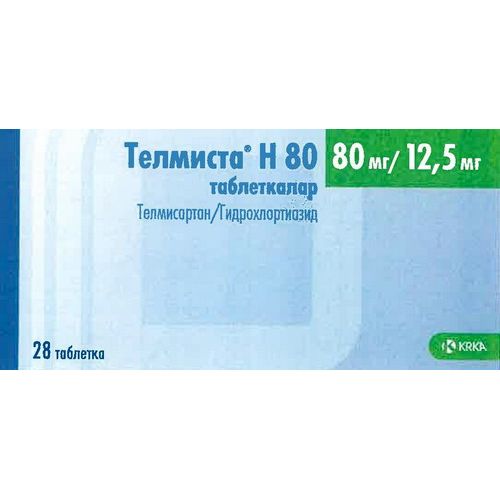
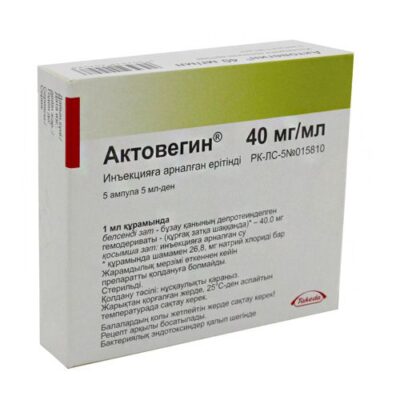
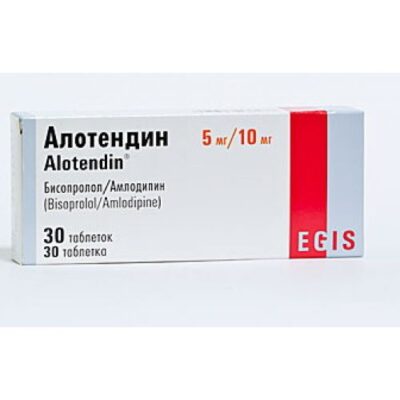
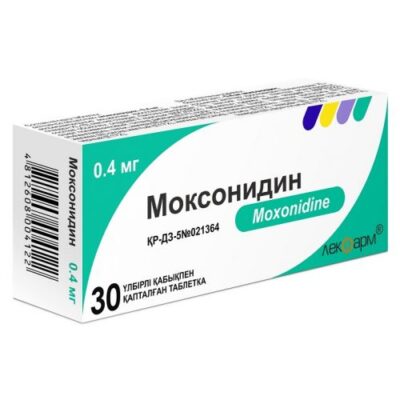
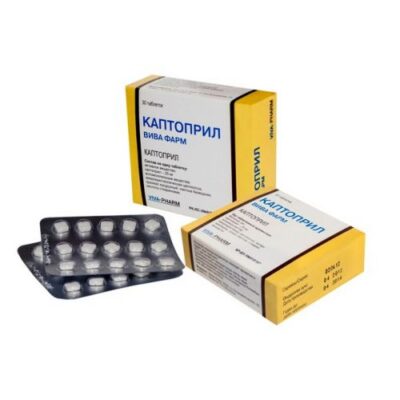
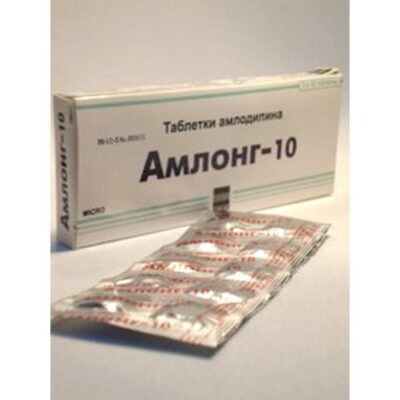
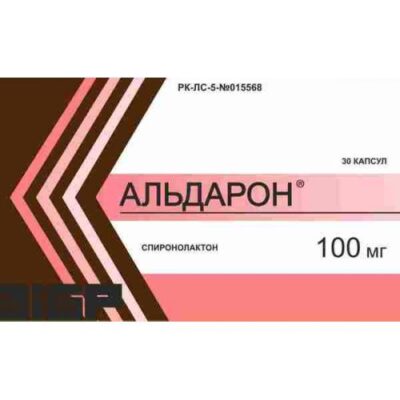
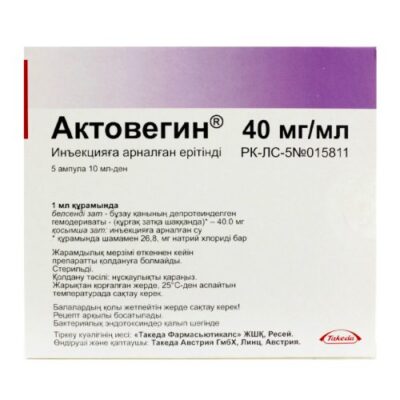
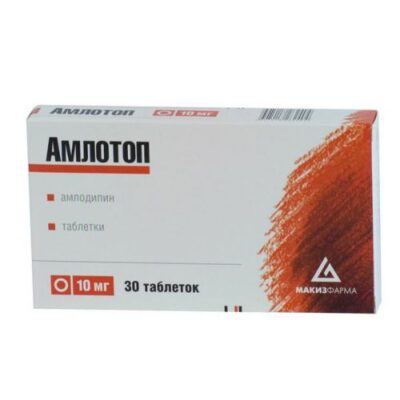
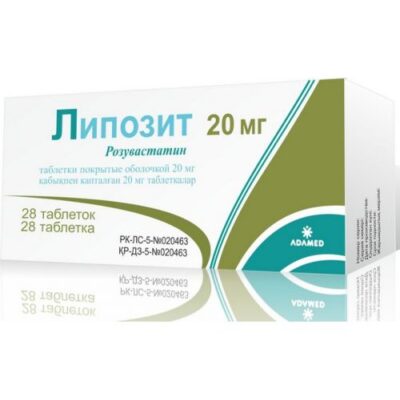
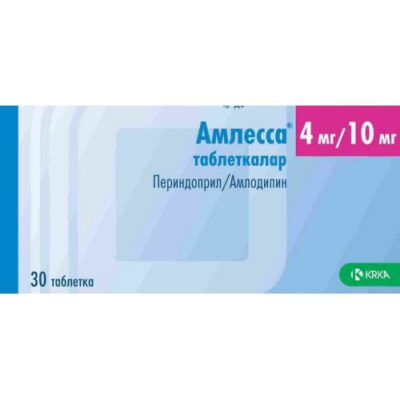






Reviews
There are no reviews yet.